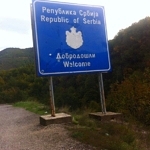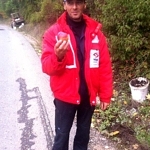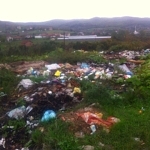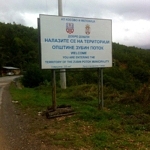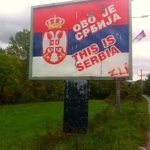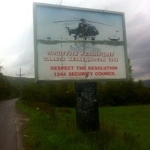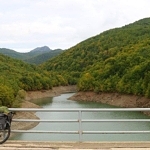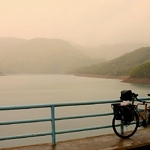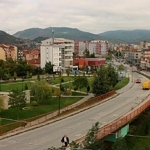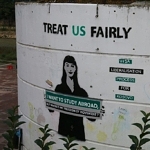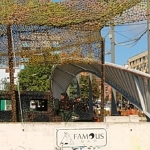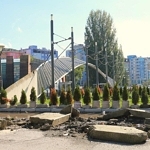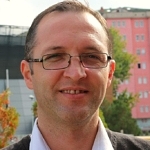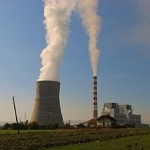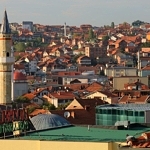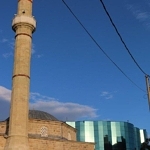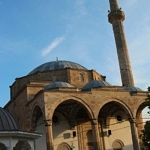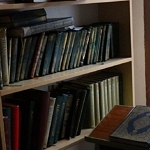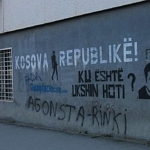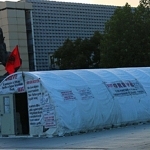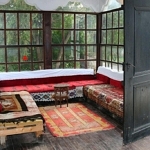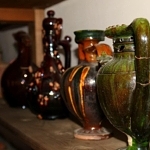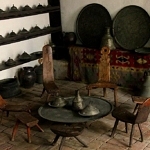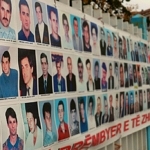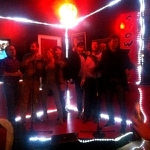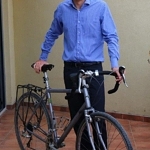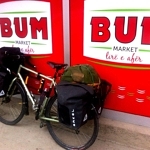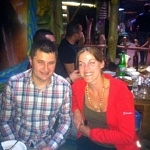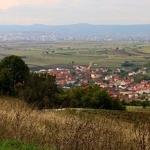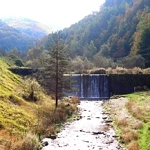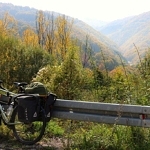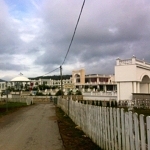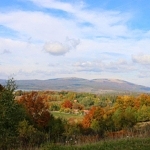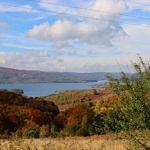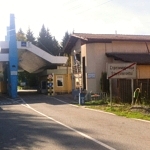.
These photos have been shrunk for ease of upload.
If you would like high res copies, please request them via the contact form on the ‘About’ page.
Cameras: Canon 70D DSLR, iPhone 4 and GoPro Hero.
.
[vc_row row_type=”row” use_row_as_full_screen_section=”no” type=”grid” angled_section=”no” text_align=”left” background_image_as_pattern=”without_pattern” css_animation=”” css=”.vc_custom_1447995013826{padding-left: 5% !important;}”][vc_column][vc_column_text]
- Man stops me to offer me some apples as I pass by. How lovely.
- Rubbish everywhere.
- I enter Zubin Potok, a town and municipality in the District of Mitrovica, North Kosovo. Kosovo, like Mitrovica itself, is split into majority Serb (north) and majority Albanian (south) ethnicities.
- A sign in North Kosovo. Kosovo declared independence in 2008, but Serbia is yet to recognise it.
- UN Security Council resolution 1244 was adopted on 10 June 1999, authorising an international civil and military presence in Kosovo (then part of Serbia), and established the UN Interim Administration Mission in Kosovo (UNMIK).
- Grey skies give way to long, heavy downpour.
- Mitrovica, a city divided between the Serb north and Albanian south.
- Graffiti in south Mitrovica.
- The rather measly ‘Peace Park’ on the bridge over the Ibar river, which divides the Albanian south from the Serb north.
- Broken paving stones on the north side of the bridge.
- A friendly waiter, who works right next to the bridge but has only crossed the bridge once in 15 years.
- Factory en route to Pristina.
- View of Pristina old town (what little remains) from my hosts’ balcony.
- Pristina, a city where old meets new.
- The Sultan Mehmet Fatih Mosque (or Imperial Mosque), built in 1460–1461 during the reign of the Ottoman Sultan Mehmet II.
- Copies of the Koran inside the Sultan Mehmet Fatih Mosque.
- Graffiti in Pristina, the Kosovan capital. It reads: ‘Where is Ukshin Hoti?’ Hoti is a professor of law and philosophy, and a leading political activist, who disappeared in prison in 1999 after serving a five-year sentence for ‘endangering the public order of Serbia’. Many activists believe he was killed.
- Main seating area in the Emin Gjiku house, which dates from the 18th century.
- Interior of the charming Emin Gjiku museum, containing traditional tools, textiles, pottery, handicrafts, weaponry and the most ridiculously tiny chairs I’ve ever seen.
- Poster in Pristina depicting the ‘kidnapped and missing’ during Serbia’s brutal crackdown on Kosovo in 1999.
- Hitting the karaoke bars.
- S, my very kind host, who – with his partner, V – is an avid cyclist in Kosovo’s mountainous terrain.
- Desperately try not to be amused by this, but very sadly fail.
- My new Serb friend, who I join for his 36th birthday in Vranje, Serbia. ‘Nobody laughs enough here,’ he tells me.
- Another bustling tourist resort in the Serbian heartlands.
- After Vranje, the sun comes out as the road weaves high into the hills. Beautiful.
- Pedalling through the mountains en route to the Bulgarian border.
- A very odd ghost-resort at the top of the mountains.
- The Serbian countryside close to the Bulgarian border following a wonderful 16km descent from the hills.
- Border crossing where the old Iron Curtain used to be (Bulgarian side). Disappointingly uneventful.
[/vc_column_text][/vc_column][/vc_row]


